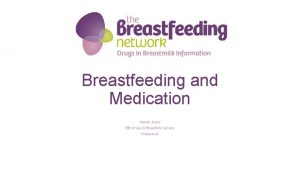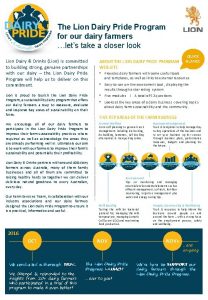Factsheet SYSTEMIC Associated Plant Name of the plant


- Slides: 2

Factsheet SYSTEMIC Associated Plant Name of the plant (City, Country) A short introduction • • Table 1. Technical information of the biogas plant Characterisation the region your plant is located (manure surplus region, a lot of/few agro industry, which crops are ) How it all started… Date of construction …. Size (MWel) …. Volume digesters (m 3) Digester type …. Mesophilic/thermo philic digestion Picture of the plant Feedstocks The digesters are fed with: X % manure (pig/cattle/…) Supplied by…. X % organic biological waste X% food waste X% … Supplied by…. (from how far? ) Table 2. Origin of feedstock Type Biogas production The biogas production is estimated on … m³ per year. This is converted in a CHP to electricity and heat? How much electricity is used on site and how much goes to the grid? Is the heat re-used? If so, for what? Mass per year Manre … ktonnes … …ktonnes Total … ktonnes Table 3. Yearly biogas production and average composition Component Estimation CH 4 (%) CO 2(%) H 2 S (ppm) O 2 (%) Total biogas production (Mm 3) Biogas per tonne of feedstock (m 3/t) Logo of the company The H 2020 EU-project SYSTEMIC (Systemic large scale eco-innovation to advance circular economy and mineral recovery from organic waste in Europe) receives funding from the European Union’s Horizon 2020 Framework Programme for Research and Innovation under Grant Agreement no. 730400

Factsheet SYSTEMIC Associated Plant Name of the plant (City, Country) Current process and disposal routes for end products • • Describe process from feedstock to end products. For example, if there is a separator describe how much liquid fraction and solid fraction is produced and what happens with them afterwards. Describe is polymer or coagulants or other chemicals are added. Describe where the N, P, K and organic matter and water goes to. Table 4. Estimated composition of the recovered products – this is an example, complete the table for your own by-products and end products Mass (kton/year) Ma nur e Dry matter (%) N- total (g/kg) P-total (g/kg) K 2 O-total (g/kg) Pig slurry Solid fraction after screw press Liquid fraction after centrifuge NH 3 water Amm. S-solution Dig est ate Amm. S-urea-solution K-humin water Solid fraction Ashes Current drivers for Nutrient Recovery and Reuse (NRR) Technologies and goals • • • Why would you be interested in nutrient recovery from digestate? In which techniques would you be interested? Which end products would be interesting to produce? (struvite, ammonium solution, ammonium nitrate solution, ammonium sulphate solution, Ca-phosphate salts, mineral concentrates, dischargeable water, …) Motivation to join SYSTEMIC What do you expect from SYSTEMIC Logo of the company The H 2020 EU-project SYSTEMIC (Systemic large scale eco-innovation to advance circular economy and mineral recovery from organic waste in Europe) receives funding from the European Union’s Horizon 2020 Framework Programme for Research and Innovation under Grant Agreement no. 730400



